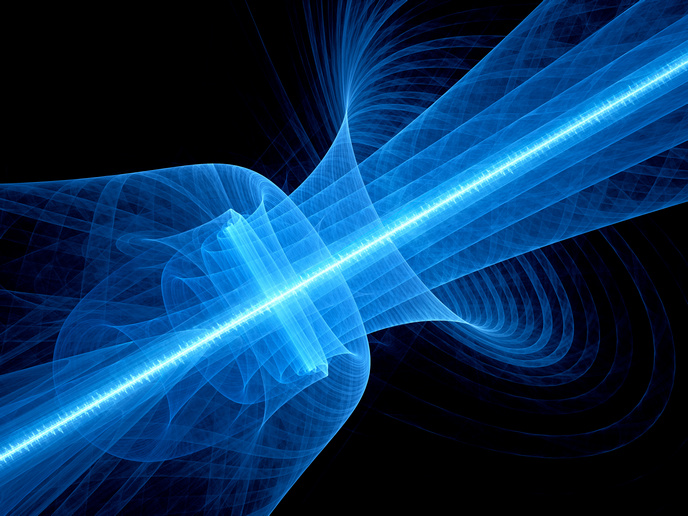Entangled state experiments shine light on quantum potential
‘The key objective of the OAMGHZ project was to create a high-dimensional three-photon entangled state using the Orbital Angular Momentum (OAM) of light,’ explains project coordinator Dr Mehul Malik from the University of Vienna, Austria, and recipient of an EU-funded Marie Skłodowska-Curie International Incoming Fellowship. The OAMGHZ project used a technique called ‘quantum erasure’ that allows two independent pairs of entangled particles with no common past to be entangled with each another. These types of experiments have so far tended to concentrate on two-dimensional or qubit entanglement. In contrast, the OAMGHZ project sought to devise a method for creating high-dimensional multi-photon states entangled in OAM. The project began by designing a multiple-input, multiple-output device for OAM, in order to separate and recombine photons. This device proved too complex for implementation on the scale of a multi-photon experiment, so an alternate device akin to a polarising beam splitter was developed that was capable of sorting and mixing the OAM of incoming photons. ‘We became the first group in the world to create an entangled state of more than two particles with more than two dimensions entangled,’ says Malik. ‘We also developed an algorithm called MELVIN that generated quantum experiments to create fifty other unique high-dimensional multi-photon entangled states.’ Real world implications High-dimensional multi-photon states entangled in OAM are interesting to researchers because light waves could be used to carry huge amounts of information, with a higher level of security than what is possible today. Additionally, such entangled states present researchers with the opportunity to carry out fundamental tests of quantum theory that could have real world implications. A future quantum internet, for example, would be one area where such states could find very useful application as carriers of information. This research has the potential to benefit the nascent quantum communications industry, and to also benefit other researchers working in the fields of quantum optics, quantum entanglement and quantum communication. In addition, a layered quantum cryptographic scheme was developed where three parties share secure information asymmetrically. ‘Asymmetric entangled states such as the one we created constitute a new direction in experimental studies of entanglement, and will allow the development of complex, multi-level quantum networks in the future,’ says Malik. Following completion of the OAMGHZ project in June 2015, Malik and his team have been able to work on creating even more complex, high-dimensional entangled states based on the experiments generated by their MELVIN algorithm. ‘We are also further expanding the algorithm’s capabilities to apply it to other challenging quantum mechanical problems,’ he adds.







